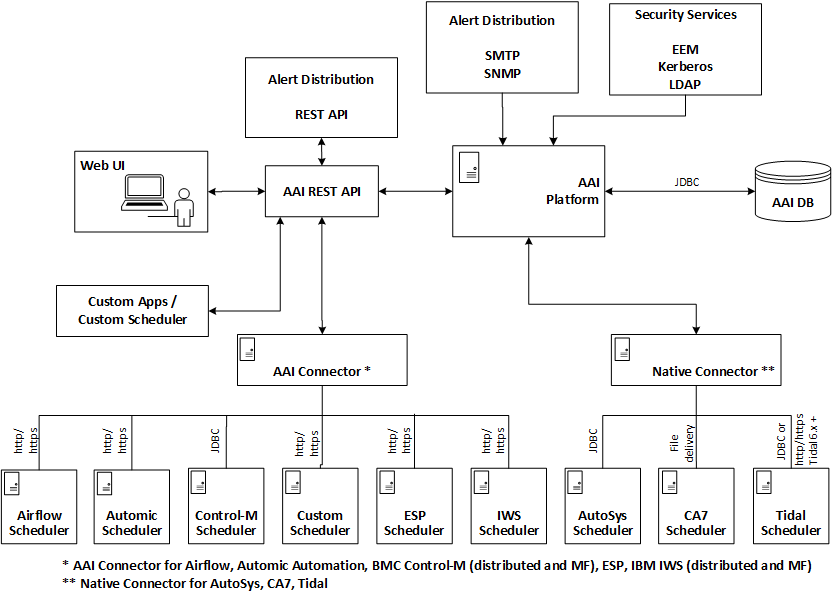Automation Analytics & Intelligence Architecture
Knowing the different components of Automation Analytics & Intelligence (AAI) and understanding their interactions with your workload automation software is essential to setting up your system successfully. This page gives you an overview of the recommended AAI architecture.
Overview

The AAI system main components are the database and the AAI Platform:
-
AAI Database: It is the central repository for all data such as the job definitions and both real-time and historical event data from the workload automation engines, and any other data generated by AAI.
-
AAI Platform: It is where all processing scheduler data takes place. This includes interpreting job definitions and event data from the workload automation engines, persisting information in the real-time AAI database instance, maintaining prediction models, updating jobstreams, generating alerts, and servicing user interfaces.
Once you have the AAI system in place, you need to install the required Connector to integrate AAI with your scheduler.
It is a best practice to install connectors on a dedicated machine. If you need more than one connector, you can install them all on the same machine.
Schedulers such as Airflow, Automic Automation, Control-M (main frame and distributed), ESP, IWS (main frame and distributed), as well as custom schedulers require a separate AAI connector for the integration. These connectors communicate with the AAI Platform through the AAI REST API.
Connectors for AutoSys, CA7 and Tidal are built into the AAI Platform. They do not require a separate AAI connector component for the integration.
The connection type between the connector and the scheduler depends on the scheduler type. For more information, see Workload Automation / Scheduler Integration through Connectors.
AAI uses domains to configure security for user logins, authentication method and access privileges to AAI's functions. You can either use the AAI native security model, or integrate security services via EEM, Kerberos, and LDAP to your system. For more information, see Domains.
You can also set up your alert distribution over SNMP and SMTP protocols, or through the AAI REST API.
See also: